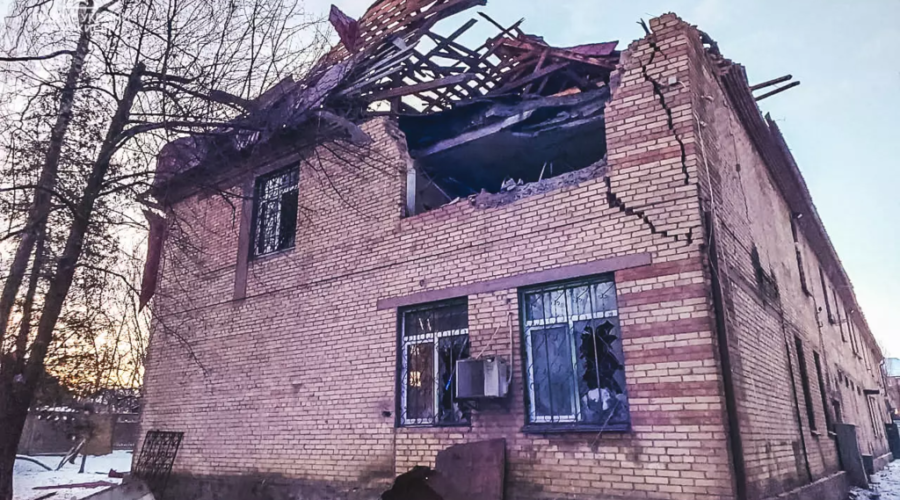Russia has resumed attacks against Ukraine’s cities and energy infrastructure using Iranian-made drones. There are also indications it is willing to assist the Iranian regime’s brutal crackdown on the large protest movement across that country.
Russia’s drone campaign began in September but came to a halt for almost a month in mid-November. It was evident that Moscow had expended the first batch of approximately 400 drones Iran delivered in August. Most of these drones were single-use loitering munitions, colloquially called kamikaze or “suicide” drones, that crash into their targets and explode.
The campaign resumed in December. On December 10, Ukrainian officials said that drone strikes against the port city of Odesa left over 1.5 million people without power. Continued strikes against Ukraine’s electricity grid could prove fatal if millions of civilians are left without heating over the winter.
On December 12, the European Council announced new European Union sanctions against Iran, noting in its statement that drones “provided by Iran are being used indiscriminately by Russia against Ukrainian civilian population and infrastructure causing horrendous destruction and human suffering.”
The statement also said that the EU “strongly cautions Iran against any new deliveries of weapons to Russia, in particular any steps towards possible transfers of short-range ballistic missiles to Russia, which would constitute a serious escalation.”
Ukraine would find it much more difficult to shoot down the Iranian Fateh-110 and Zolfaghar missiles sought by Russia. And if Moscow does ultimately obtain hundreds of them, they could potentially overwhelm even the advanced Patriot missile interceptors the U.S. is set to send Ukraine soon.
However, there have been indications that Iran is reluctant to supply them. Since mid-September, the regime in Tehran has faced the most serious protests against its despotic rule in 40 years with the onset of countrywide demonstrations following the infamous death of 22-year-old Mahsa (Jina) Amini in police custody.
In early December, a senior advisor to Ukrainian President Volodymyr Zelensky told the Guardian that Iran’s “government is starting to lose its grip on Iranian society and their inner domestic problems are growing.”
“That’s why they just don’t have time for dealing with Russia,” Mykhailo Podolyak said. “It’s not their priority.”
Nevertheless, cooperation has clearly continued. The fresh wave of attacks Ukraine is now enduring indicates Iran has supplied Russia with another sizable batch of drones. Furthermore, a factory for manufacturing these drones on Russian soil is reportedly in the works and Russia will likely supply Iran with advanced Su-35 fighter jets as soon as next year. All of this is part of what the U.S. has recently described as “an unprecedented level of military and technical support that is transforming their relationship into a full-fledged defense partnership.”
Iran reportedly intends to limit the range of any missile it ultimately delivers to Russia to avoid violating UN Security Council Resolution 2231. Per the terms of that resolution, countries are prohibited from receiving Iranian ballistic missiles with ranges exceeding 300 kilometers or payloads over 500 kilograms until October 2023. Tehran has accordingly ruled out any delivery of Zolfaghars, which have twice the range of the Fateh-110s, to Russia. In doing so, it hopes to avoid having the UN arms embargo, lifted in October 2020 under the terms of the July 2015 nuclear deal, reimposed on it.
Russia, which by many accounts has depleted at least half of its ballistic and cruise missile stockpiles, is apparently so eager to facilitate the delivery of Iranian missiles that it’s willing to help the Iranian regime crush the protests. According to that Guardian report, Moscow has offered Tehran its experts in crushing such protests, aptly dubbed “cut-throats”.
In late October, the White House also said there were signs indicating Russia is assisting Iran’s crackdown.
“We are concerned that Moscow may be advising Tehran on best practices, drawing on Russia’s extensive experience of suppressing open demonstrations,” White House press secretary Karine Jean-Pierre told a press conference.
Russia would, as the recent hiatus in drone strikes demonstrated, find it significantly more difficult to continue bombarding Ukraine without Iranian weapons deliveries and resupplies. On the other hand, Iran may also need Russia’s support against the protests, especially if they continue into 2023. The rulers in Moscow and Tehran evidently do not care about the injustices and suffering their actions inflict upon innocent Ukrainian and Iranian civilians.
In recent years, Iranian Supreme Leader Ayatollah Ali Khamenei discontinued the regime’s longstanding policy of “Neither East, nor West – but the Islamic Republic!” proclaimed by its founder, Ayatollah Ruhollah Khomeini, and has instead thrown Iran’s lot in with the eastern powers. The unprecedented military alliance with Russia is undoubtedly a product of this fateful pivot.
One article has suggested there may be an apt historical precedent from the early 19th century. At that time, Russia guaranteed Iran’s Qatar dynasty – with which it had signed the infamous Treaty of Turkmenchay that ceded territories previously belonging to Iran to Russia – its hold on power by ensuring the succession of the king’s children after the crown prince unexpectedly died before his father. The author concluded the article by pondering if the 83-year-old Khamenei “has obtained a promise from Vladimir Putin that, in return for drones and Iranian military advisors for Ukraine, Russia will make sure that Mojtaba Khamenei succeeds his father when the time comes.”
Only time will ultimately tell how far this relationship goes and how long it lasts. What is becoming increasingly clear, however, is that the respective fates of the Iranian and Ukrainian people have become linked as a direct result of this cynical Moscow-Tehran axis.
Image: Building in Shevchenkivskyi District of Kyiv, damaged by fragments of a shot kamikaze drone after Russian drone attack on 14 December 2022 by State Emergency Service of Ukraine

